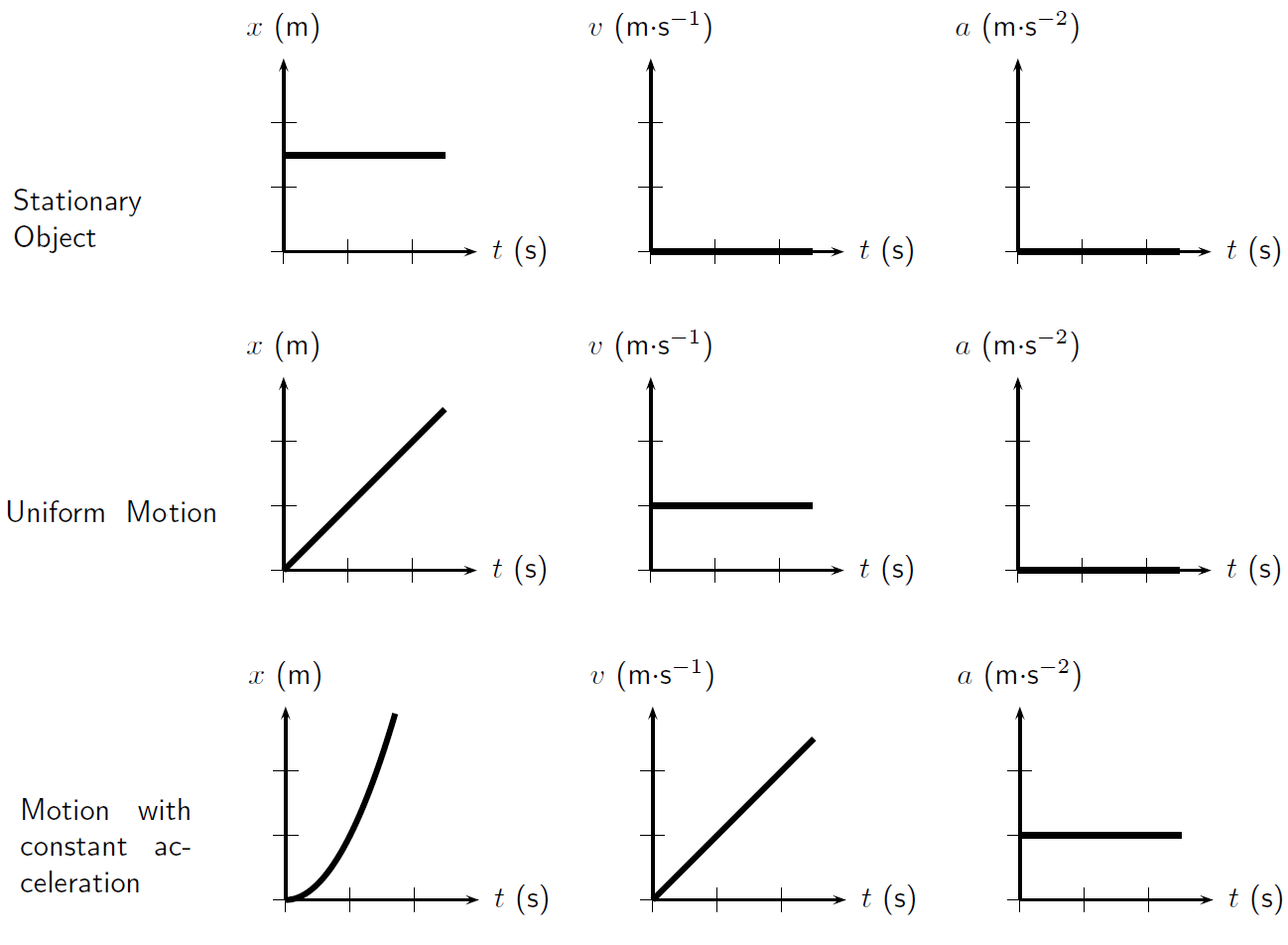| << Chapter < Page | Chapter >> Page > |

To calculate the velocity of the taxi you need to calculate the gradient of the line at each second:
From these velocities, we can draw the velocity-time graph which forms a straight line.
The acceleration is the gradient of the vs. graph and can be calculated as follows:
The acceleration does not change during the motion (the gradient stays constant). This is motion at constant or uniform acceleration.
The graphs for this situation are shown in [link] .

Just as we used velocity vs. time graphs to find displacement, we can use acceleration vs. time graphs to find the velocity of an object at a given moment in time. We simply calculate the area under the acceleration vs. time graph, at a given time. In the graph below, showing an object at a constant positive acceleration, the increase in velocity of the object after 2 seconds corresponds to the shaded portion.
The velocity of the object at is therefore . This corresponds with the values obtained in [link] .
The relation between graphs of position, velocity and acceleration as functions of time is summarised in [link] .

Often you will be required to describe the motion of an object that is presented as a graph of either position, velocity or acceleration as functions of time. The description of the motion represented by a graph should include the following (where possible):
You will also often be required to draw graphs based on a description of the motion in words or from a diagram. Remember that these are just different methods of presenting the same information. If you keep in mind the general shapes of the graphs for the different types of motion, there should not be any difficulty with explaining what is happening.

Notification Switch
Would you like to follow the 'Physics - grade 10 [caps 2011]' conversation and receive update notifications?